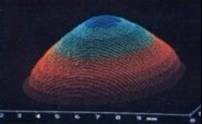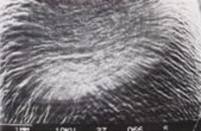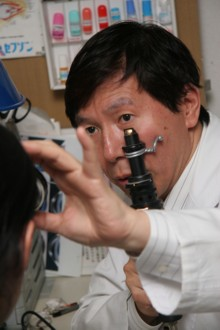Please view a video of operation on the right side.
The operation includes 3 steps. Note: The Video shows Step 2 and 3.
Step 1. Apply the ring to fix the eye movement.
Step 2. The photochemical vaporization, laser procedure starts under the observation of my college and I. We monitor the depth of the vaporization throughout the procedure as every eye is unique.
Step 3. Remove the ring and apply eye drops which includes MMC and a protective contact lens which will stay in place for a week.
Video 1: Broad Beam laser (superficial PRK) Shows an actual procedure
Reasons for development
I created the Broad Beam / Superficial PRK operation out of concern for my patients. I wanted a simple procedure which will give my patents a better quality of life.
This is a Russian Broad Beam Laser not an American laser with its inherent central Island problems.
All Lasik Doctors know the inherent risks of Lasik.
As you can see in the video the Broad Beam Laser is a solid laser and not a scanning laser.
It photo chemically vaporizes gradually and smoothly creating a refractive surface which no other operation in the world can provide at this point in time.
Each ring has a slightly different amount of energy distribution which is customized for different eye profiles.
Please consider your patients and their vision 20 plus years from now.

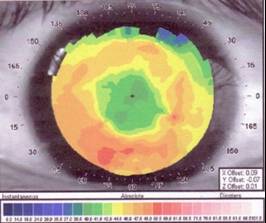
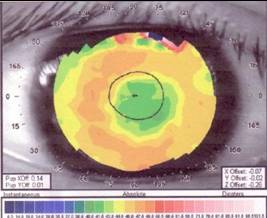
Picture F: Keratotopogram My Left Eye, Post RK 27 y.a.
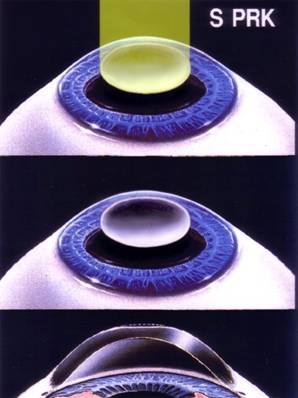
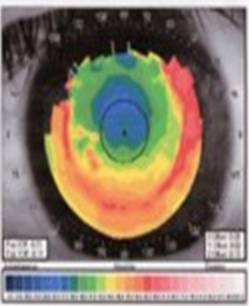 Picture B: Keratotopogram of the patient left eye
Picture B: Keratotopogram of the patient left eye